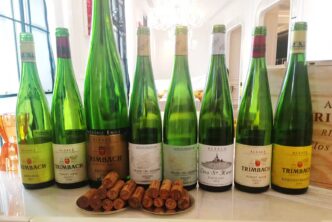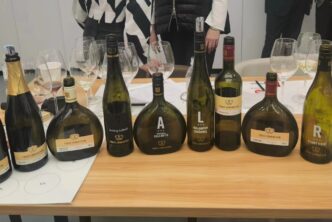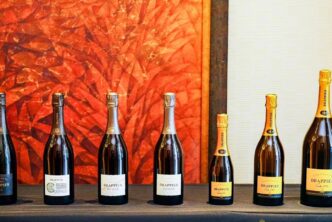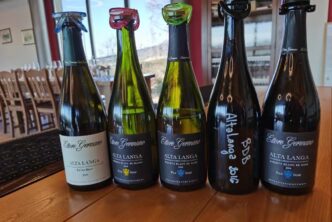Wine reviewing is, on the whole, about discovering, tasting and evaluating wines for possible purchase on the part of the wine loving public. As such most reviews are at least favorable and many enthusiastic about the wines tasted. We all want and love good news—in every area of life. Most wine writers simply do not report on mediocre or poor wines unless absolutely necessary. Review the good wines, simply ignore the others. In this essay I want to focus on something that serious wine lovers/collectors experience but do not like to discuss very often: Disappointment with well-regarded wines which have been aging in a cellar. It is a sad truth that there are collectors of dubious sanity who collect and rarely drink the wines in their cellars. This pleasure-denying hoarding defeats the very purpose of wine—to be enjoyed in the company of like-minded individuals. I have never once purchased a wine without thinking about the friends with whom I will drink the wines. You can enjoy a glass of Scotch or Bourbon by yourself—but a glass of Ducru Beaucaillou?

This brings me to recent disappointments with two Burgundies with significant bottle age, good reputations and which have been properly cellared for some time. The first was a 2009 Vosne Romanee Aux Brulées 1er Cru from Bruno Clavelier which I had purchased from the grower during a visit to his tasting room six years ago. It should have been excellent. It was not: blowsy, disjointed, hollow in the middle with very little of the Vosne spice and energy for which the village is famous. Did I drink the wine at an awkward stage? The 2009 was a very warm vintage—the first since 2005 to experience fully ripe fruit. At ten years in the bottle the wine should have been exciting and rewarding. Otherwise, why wait ten years? Something was not quite right—and I am sure it was not this particular bottle. When we buy wines like 1er Cru Burgundies we are in fact buying them for their developmental potential—not just to see if they will survive a decade of cellaring. The second wine was a 2002 Meursault La Piece sous le bois 1er Cru from Robert Ampeau (at Ampeau they write the “sous le bois” part of the cru’s name without any capital/block letters). Serious Burgundy collectors are familiar with Ampeau’s technique of aging his wines in large vats for a decade or more before bottling. This was a recent re-release which I purchased from a very reputable source. 2002 was one of the vintages to suffer dramatically from pre-mox in the Cote de Beaune white Burgundies. There was no evidence of oxidation in the bottle we drank. Alas almost all the fruit was gone. What remained was a shell of a Meursault—tart, lean and without any real vinous merit. The fill was excellent and the color of the wine that of a much younger wine. What went wrong? Perhaps this can be reduced to a case of bad luck. It happens. The reason I focus on this recent situation is that it is inherent to wine collecting. No one buys top Bordeaux, Burgundies, Barolos, to drink them early in their lives. Reputable wine writers do that work for collectors. The risk belongs to the collector. Disappointment is the unavoidable other side of being thrilled, moved or simply pleased by the wines we collect with the goal of allowing the wines to age into glorious maturity. Perhaps Burgundy is the wine region where risk of disappointment is greater than anywhere else in the world of wine. Barolos have become much more reliable. It takes a really bad vintage for Bordeaux to disappoint. (I will add that the quality and consistency of Burgundy has improved noticeably with the 2010 vintage going forward). Of course, you can drink all of your wines young to prevent disappointment. But then you defeat the very reason to collect (potentially) outstanding wines. It takes a certain amount of courage to spend a lot of money on wines whose full potential can take 10-20 years to actualize.


 中文
中文



